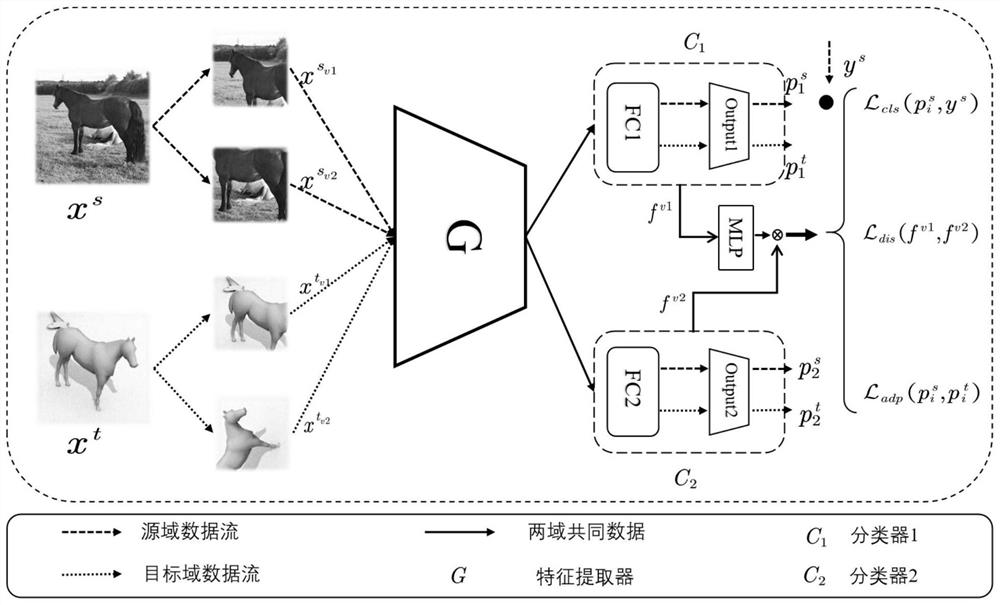Domain self-adaptive method and device based on comparative adversarial learning
An adaptive, field-based technology, applied in neural learning methods, instruments, biological neural network models, etc.
- Summary
- Abstract
- Description
- Claims
- Application Information
AI Technical Summary
Problems solved by technology
Method used
Image
Examples
Embodiment Construction
[0038] Such as Figure 5 As shown, this method of domain adaptation based on contrastive adversarial learning, the method includes the following steps:
[0039] (1) Use the loss function L on the source domain data cls (x s ,y s ) to train the entire network model, the optimization process is defined as formula (1):
[0040]
[0041] Among them, L ce ( , ) is the cross-entropy loss, θ g , θ c1 θ c2 Respectively, the feature network G, C 1 , C 2 parameters in
[0042] (2) Fix the parameters in the feature extractor and only update the classifier C 1 and C 2 , minimize the classification loss of the classifier and maximize the discriminative difference between the classifier and the sample in the target domain. The loss function is formula (2):
[0043]
[0044] Among them, L dis ( , ) means that the dual classifier only updates the parameters in the classifier for the discriminative difference of the target domain samples, and at the same time, the model adds...
PUM
 Login to View More
Login to View More Abstract
Description
Claims
Application Information
 Login to View More
Login to View More - R&D
- Intellectual Property
- Life Sciences
- Materials
- Tech Scout
- Unparalleled Data Quality
- Higher Quality Content
- 60% Fewer Hallucinations
Browse by: Latest US Patents, China's latest patents, Technical Efficacy Thesaurus, Application Domain, Technology Topic, Popular Technical Reports.
© 2025 PatSnap. All rights reserved.Legal|Privacy policy|Modern Slavery Act Transparency Statement|Sitemap|About US| Contact US: help@patsnap.com



